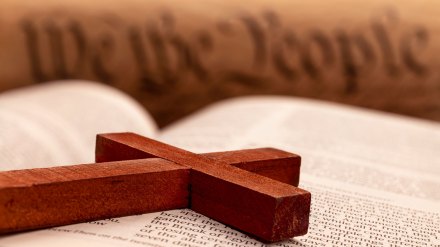Lawmakers in North Dakota and West Virginia recently passed religious freedom protections, joining 24 other states that have done the same—and with nearly all enacted in the roughly three decades since the US Supreme Court handed down two controversial decisions.
West Virginia’s “Equal Protection for Religion Act” took effect on May 29, 2023, while North Dakota’s law became effective on August 1, 2023.
Both laws are almost identical.
The language follows a “substantial burden/compelling government interest/least restrictive means” standard drawn directly from the federal Religious Freedom Restoration Act (RFRA). Congress unanimously passed RFRA three years after the Supreme Court’s controversial 1990 decision in Employment Division v. Smith.
The Smith controversy
The majority in Smith contended neutral laws and government actions that generally apply to the public could incidentally burden religious exercise without violating the US Constitution.
Religious freedom advocates immediately decried the ruling; many still highly prioritize legal efforts to overturn it.
Based on First Amendment religious freedom protections, they say, the government should meet a higher standard whenever any law, regulation, or other government-initiated action affects an individual or organization’s religious exercise, incidental or otherwise.
Congress responded with RFRA in 1993, embracing the “substantial burden/compelling government interest/least restrictive means” standard.
When compared to the Smith decision, RFRA’s standard means a claim brought by an individual or organization has a better chance of prevailing—although victory isn’t automatically guaranteed.
Congressional overreach
Four years after RFRA’s passage, though, the Court significantly curtailed the law’s power.
The Court ruled Congress overstepped its constitutional powers when it passed RFRA. Courts have since determined the law applies only to federal laws and federal government actions.
Some states began adopting RFRA-like measures soon after, implementing the “substantial burden/compelling government interest/least-restrictive means” standard for their respective local and state governments.
Fourteen states passed such laws between 1993 and 2005 (with Utah’s religious land use act, passed in 2005, offering RFRA-like protections to churches in property-related matters). Another nine passed RFRAs between 2009 and 2021.
Virginia’s religious freedom protection was included within its constitution codified in 1786.
Become a Church Law & Tax Advantage Member and enjoy 20% off our downloadable 50 State Religious Freedom Laws Report.
Prior to North Dakota and West Virginia, South Dakota and Montana were the most recent to do it. Both passed their respective laws in 2021.
Expanded protections after COVID-19
Like South Dakota, both North Dakota and West Virginia’s new laws also prohibit state and local governments from restricting religious conduct more than secular conduct of “reasonably comparable risk” or “comparable … alleged economic need or benefit.”
The additional provisions address concerns raised by religious liberty advocates throughout the COVID-19 pandemic when government mandates throughout the country affected in-person worship services.
As the pandemic continued, churches and religious organizations began legally challenging mandates prohibiting them from meeting. The challenges often referenced the abilities for similarly situated secular activities to physically gather.
Courts—including the Supreme Court—initially granted state and local governments with greater leeway as they sought measures to slow COVID-19’s spread. Eventually, though, a majority of the Court saw state and local restrictions unevenly applied to churches and determined they were unconstitutional.
